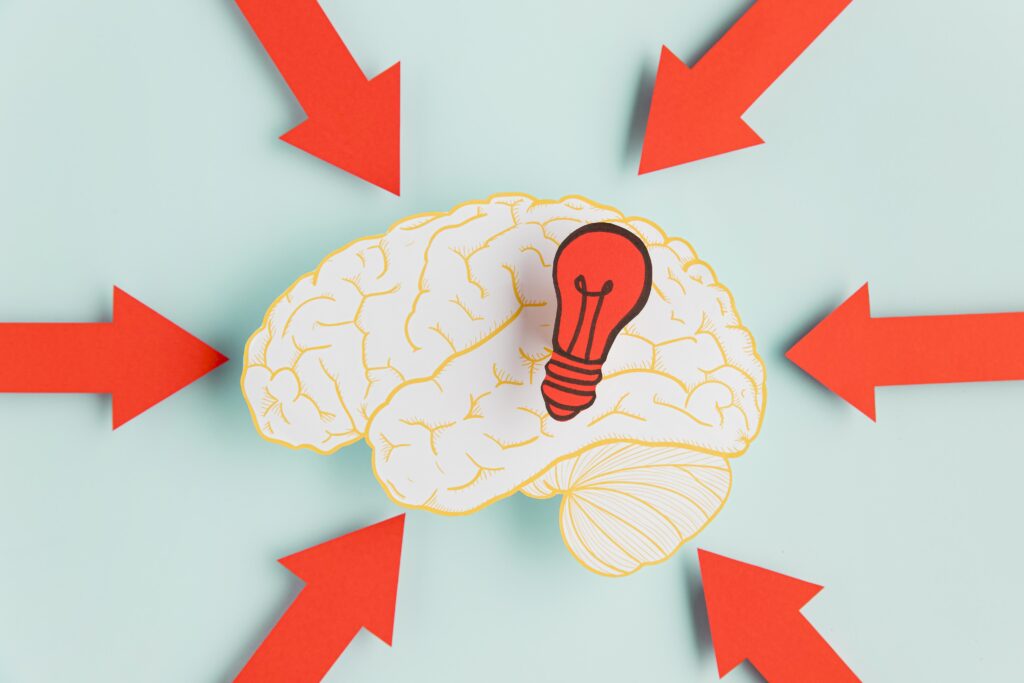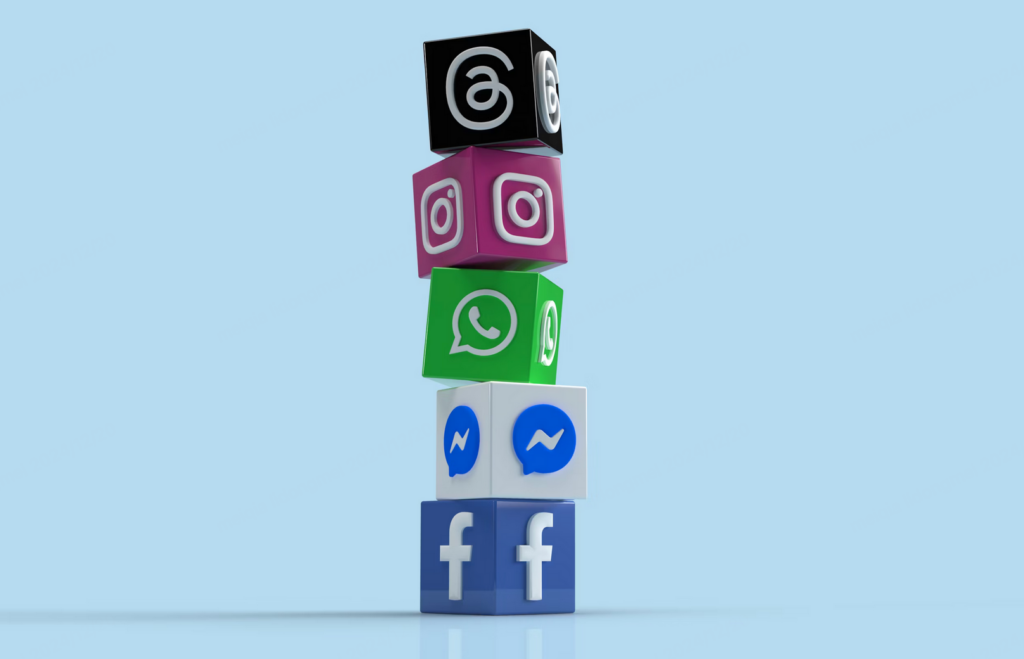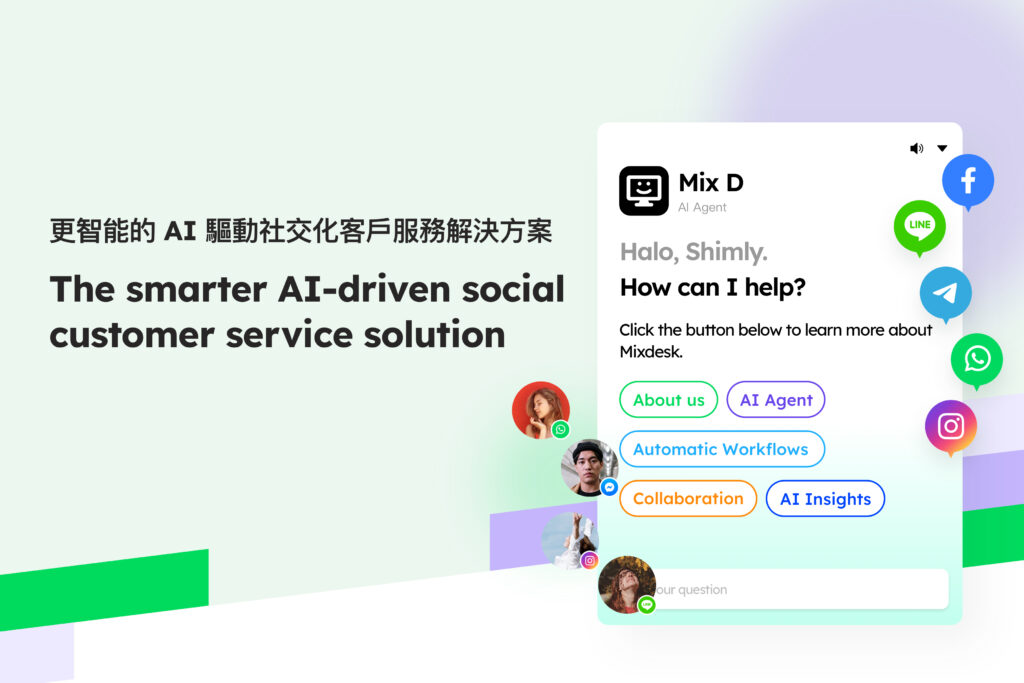In the growth formula of overseas business, “new customer acquisition” is often placed in the spotlight. But it is often loyal old customers who can continue to support business growth. According toMcKinsey DataIt shows that in overseas markets, for every 5% increase in customer retention rate, corporate profits can increase by 25%-95%.
But the reality is that 80% of overseas teams are still repeating the misunderstanding of “regaining customers and retaining customers lightly"-this article will disassemble the core logic of customer retention in overseas business, from optimizing the customer experience and enhancing brand stickiness to data-driven personalized marketing, and comprehensively analyze how to enhance customer loyalty and long-term value..

- 1. Break first and then stand up: 3 Cognitive misunderstandings about the retention rate of Overseas Business customers
- Myth 1: Treat “overseas customers” as a "unified group” and ignore localization differences
- Myth 2: Customer maintenance is only done “when the customer is going to be lost”, and the golden window period is missed.
- Myth 3: Using ”domestic retention experience" to apply overseas, ignoring platform rules and user habits
- 2. The whole process of landing: 4-step retention skills from “new customer first order” to "loyal users”
- Stage 1: 0-7 days after the first order (goal: Build trust and eliminate concerns)
- Stage 2: 15-30 days after the first order (goal: Activate demand and guide repurchase)
- Stage 3: After 2-3 repurchases (goal: Cultivate habits and increase stickiness)
- Stage 4: repurchase more than 4 times (goal: stimulate fission and expand influence)
- 3. Tool empowerment: choose tools that efficiently improve customer retention and reduce the threshold for landing
- 4. The core of improving customer loyalty-treating customers as “locals” rather than "traffic”
1. Break first and then stand up: 3 Cognitive misunderstandings about the retention rate of Overseas Business customers
Before building a retention system, we must first avoid those “seemingly correct” traps. These misunderstandings often cause overseas companies to invest a lot of resources, but they do not get the ideal retention effect.

Myth 1: Treat “overseas customers” as a "unified group” and ignore localization differences
Many overseas teams use a set of retention strategies to deal with the global market: sending “bargaining coupons” to European and American customers is as inefficient as promoting “non-religious products” to Middle Eastern customers. For example, a cross-border clothing brand once pushed a “limited-time 30% off” promotional email to users in the Middle East during the holy month of Ramadan, but because it did not consider the local cultural habit of “reducing consumption and entertainment during the holy month of Ramadan”, the opening rate was less than 2%, which caused some users to resent.
the truth: Customers in different regions have completely different sensitivity to ”retention incentives". Users in Europe and the United States value “personalized service” (such as exclusive customer service and customized product recommendations), users in Southeast Asia have a strong response to “small cash back”, while users in the Middle East value “brand cultural adaptability” (such as payment methods that comply with Islamic law, products without exposed design).
Myth 2: Customer maintenance is only done “when the customer is going to be lost”, and the golden window period is missed.
The retention actions of many overseas companies focus on emergency scenarios such as “users are not active for 30 days” and “order cancellation”, but ignore the more critical “7 days after the first order”-this is the golden period for building customer trust.According to statistics, For customers who take the initiative to serve once within 7 days of the first order, the 3-month retention rate is 40% higher than that of the non-service group; and when the user does not log in for 15 consecutive days before contacting, the recovery success rate is less than 15%.
the truth:Customer retention is the work of the “whole life cycle”, not a “fire-fighting” remedy. From the “logistics tracking reminder” after the customer places the order, to the “getting started guidance” after using the product, to the “demand mining” before the repurchase, each node needs to design a corresponding retention action.
case:However, many small and medium-sized overseas companies often have limited manpower and difficulty adapting to multiple markets, making it difficult to hold on to the golden period of “7 days after the first order”-manual reminders are easy to miss, and the wrong language can hurt trust. A brand has been in trouble as a result: the first order has a low 7-day mobile service rate, and the 3-month retention rate is only 28%. But in the accessMixdesk Smart Online Customer ServiceAfter that, the situation has completely changed: through the automated workflow of the platform, the system automatically matches the customer's region and needs-sending German logistics links to German customers, pushing reminders to Middle Eastern customers to avoid the daytime hours of Ramadan, and attaching safety guidelines by product type (such as children's furniture). In the end, the 7-day service rate of the first order soared, and the 3-month retention rate jumped to 63%. At the same time, the workload of customer service was greatly reduced, and the critical retention period was stabilized without additional investment.

Mixdesk is an overseas multi-channel intelligent customer communication platform that can unify multiple channels such as Facebook, Instagram, WhatsApp, Line, Telegram, and Email to help companies communicate and serve customers. Mixdesk also supports AI employee functions, allowing enterprises to achieve more efficient automated customer service.
Myth 3: Using ”domestic retention experience" to apply overseas, ignoring platform rules and user habits
The “community fission” and “circle of Friends advertising recall" commonly used in China may be completely invalid in overseas markets. For example, if an overseas e-commerce company wants to copy the domestic “WeChat mass coupon” gameplay and posts a large number of discount links in Facebook groups, the account will be blocked due to violations of the platform's “over-marketing” rules, but a group of active customers will be lost; there are also teams that send “SMS marketing” to users in Europe and the United States, but there is no such thing.Realizing that local users have a very high degree of disgust with “unauthorized text messages”, the unsubscribe rate has increased significantly.
the truth: Overseas retention must be adapted to the local "platform ecology” and "user habits": the European and American markets rely on "EMAIL + WhatsApp” to reach, and Southeast Asia gives priority to “LINE + SMS", and it is necessary to obtain the user's “marketing authorization" in advance (such as the “double confirmation” required by the EU's GDPR); At the same time, To comply with local platform rules, such as Facebook prohibits “inducing sharing”, and Amazon does not allow “guiding customers away from platform communication.”
2. The whole process of landing: 4-step retention skills from “new customer first order” to "loyal users”
Based on the life cycle of overseas customers, we can disassemble 4 key stages, each corresponding to different retention goals and landing methods, and adapt to different overseas scenarios such as cross-border e-commerce, SaaS, and hardware.

Stage 1: 0-7 days after the first order (goal: Build trust and eliminate concerns)
After the customer completes the first order, the most worried thing is “whether the product meets expectations”, “whether the logistics is smooth”, and “whether the after-sales service is guaranteed”-the core of the retention action at this time is to “reduce anxiety and strengthen trust.”
Cross-border e-commerce scene: After-sales follow-up of "Transparency + localization"
- Logistics transparency: Use local usersFamiliar waySynchronize logistics information. For example, SEND A “USPS logistics tracking link” to U.S. customers with an English “Abnormal situation handling guide”; use LINE to push “logistics progress in local language” to Southeast Asian customers to avoid the problem of “English logistics information cannot be understood”. A cross-border home furnishing e-commerce company has conducted a test and the return rate of customers who sent 2 localized logistics reminders within 3 days after the first order was 25% lower than that of the non-reminder group.
- Active after-sales contact: Within 24 hours after the first order is received, use "SMS/email" to send “Usage tips” + "After-sales contact information". For example, to European customers who buy coffee machines, send “how to adapt to the local voltage” and “3 kinds of coffee making tutorials”, and attach a “24-hour customer service mailbox” in the local language, instead of just leaving a domestic 400 phone number.
Stage 2: 15-30 days after the first order (goal: Activate demand and guide repurchase)
After passing the trust period, customers begin to have the possibility of “secondary consumption”. At this time, the core of the retention action is to “tap potential demand and give reasons for repurchase.”
Cross-border e-commerce shopping mall scene: "Personalized recommendation + Localized scene marketing”
- Accurate recommendation based on the first order: Avoid pushing “men's sports shoes” to customers who have bought “baby milk powder”. An overseas maternal and infant e-commerce company analyzed the customer's first order data to give users who have bought “0-6 months baby diapers” a combination discount of “6-12 months diapers + food supplement tools” when the baby is almost 6 months old. The repurchase conversion rate is 50% higher than the random recommendation.%.
- Bind local festivals / scenes: For example, for European customers, the “Wish List pre-order discount” is pushed 2 weeks before the “Black Friday” (lock in demand in advance), and the “family gathering set” (adapted to holiday scenes) is pushed for Southeast Asian customers “1 month before Eid Al-Fitr”. A cross-border beauty brand launched a “family gift box” before the “Autumn evening" (similar to the Mid-Autumn Festival) in South Korea, and marked “Mid-Autumn Gifts suitable for parents” on the details page, increasing the repurchase rate by 28%.
Hardware going to sea scenario: “Consumables / accessories binding + Usage scenario expansion”
- Consumables reminder to repurchase: For hardware products that need to replace consumables regularly, a “consumables replenishment reminder” will be pushed 15 days in advance. For example, a brand of overseas printer that uses device networking data to send users an “exclusive discount code + local delivery link” when the ink cartridge is about to run out, and the repurchase rate of consumables is 60% higher than that of the manual purchase group; a brand of sweeping robot pushes the “filter after 3 months of use”. “The combination discount of filter + side brush" helps to increase the repurchase rate of accessories.
- Expand usage scenarios: Recommend “extended functions of hardware” to customers to stimulate new demand. For example, a certain overseas projector brand introduced a set of “projection screen + 3D glasses” to customers who purchased the basic model, with a “home theater construction tutorial” to guide customers to upgrade usage scenarios, and the repurchase rate of related accessories has been significantly increased.
Stage 3: After 2-3 repurchases (goal: Cultivate habits and increase stickiness)
When customers have completed 2-3 repurchases, they have initially recognized the brand. At this time, they need to make repurchases a habit through “long-term incentives” to avoid being attracted by competing products.
General skill 1: Build a "localized membership system” and refuse “global unified points”
The needs of overseas customers for the membership system value “actual rights and interests” rather than “number of points” more than domestic ones. For example:
- European and American markets: member rights and interests can be set up “free return and exchange", "exclusive customer service channel”“ ”priority purchase of customized products";
- Southeast Asian market: Members can provide “small cash back” (such as a cash coupon of US 55 for every US消费 100 spent) and "offline pick-up priority service” (adapted to the local habit of ”liking offline pick-up");
- Middle East market: Member rights and interests must be in line with local culture, such as “installment payment in accordance with Islamic law” and “exclusive gift box for Ramadan”.
General tip 2: “Interact regularly” to keep the brand in the customer's vision
Interaction is not "sending promotional advertisements”, but “providing value”:
- Cross-border e-commerce: send “localized life guides” to customers, such as “winter home warmth skills” (with related product recommendations) to European customers, and “rainy season moisture-proof storage methods” (related storage products) to Southeast Asian customers.;
- SaaS tools: Regularly push “industry cases”, such as sending “cases of using our tools to improve the efficiency of order processing by 30%” to cross-border seller customers, and “solutions to reduce management costs by 40% with our system” to overseas educational institutions.;
- Hardware brand: Share “product usage skills”, such as sending “brewing parameters of different coffee beans” to coffee machine customers, and “3 ways to improve projection clarity during the day” to projector customers.
Stage 4: repurchase more than 4 times (goal: stimulate fission and expand influence)
Loyal customers are not only “high repurchase groups”, but also “overseas propagandists” of brands-their recommendations are more convincing than advertisements, and they bring new customers.Higher retention rate。
Landing technique 1: Design "localized fission incentives” to avoid “domestic new routines”
- European and American markets: suitable for “two-way rewards". If a customer recommends a friend to buy, the referrer will get a " 美元20 no threshold coupon”, and the referrer will get a "10% off the first order”.;
- Southeast Asian market: “Small cash rewards” are more effective. If you recommend 1 person to place an order, the referrer will get "IDR 5,000 cash back”, and it can be credited to the local e-wallet immediately.;
- Middle East market: “Incentive mechanism“ is indispensable. If 3 people are recommended to become members, they can get ”brand-customized Islamic-style gifts".
Landing technique 2: Let loyal customers participate in "brand building" and enhance their sense of belonging
- Invite customers to participate in "product research”: When an overseas beauty brand develops "exclusive lipsticks for the Middle East market”, it invites 100 loyal customers to vote for “color number” and "packaging design". The sales volume of the final product in the first month is 3 times higher than that of ordinary products, and the customers who participated in the research repurchased it.Rate of 90%;
- Create a "customer case library”: organize and localize the experience of loyal customers, post it on the brand's official website and social accounts, and provide customers with “exclusive exposure rewards” (such as free membership upgrades). It can not only enhance brand trust, but also enhance the willingness of customers to participate in the case recommendation.
3. Tool empowerment: choose tools that efficiently improve customer retention and reduce the threshold for landing
For small and medium-sized overseas enterprises, the core of tool empowerment is not “stacking functions”, but “accurately matching overseas scenarios + reducing cross-tool losses”. Overseas retention needs to focus on covering the three major links of "customer reach”“ "Data tracking” and "localization services". Choosing the right tools can increase retention efficiency by more than 50%, while inefficient tool combinations will increase operating costs-The following starts from the tool requirements of each link and combines the actual combat scenarios to disassemble and select the types.Logic helps companies avoid the pit of ”multi-tool switching".
1. Customer reach tools: multi-channel adaptation + localized and accurate push
The key pain point for overseas customers to reach is “channel dispersion + language/culture adaptation difficulty”: European and American customers are used to EMAIL+WhatsApp, Southeast Asia relies on LINE, and the Middle East commonly uses Telegram. If you use multiple independent tools to manage, you not only need to switch accounts repeatedly, but also prone to "missed push from a certain channel”“The problem of ”language template mismatch".
The ideal reach tool needs to meet three conditions: ① Native docking with mainstream overseas channels, no need to develop separately; ② Comes with a multi-language template library to adapt to different market cultures; and 支持 supports A/B testing to optimize the push effect.
Many small and medium-sized overseas companies have been caught in a "multi-tool melee”: using Mailchimp to send emails, logging in to WhatsApp Business to send notifications separately, and relying on manual transmission of content to LINE. Not only is it time-consuming, but it is also often because they are not familiar with the local situation and step on the pit. And likeMixdeskThis kind of integrated tool can solve these problems at once——Built-in language template library,Native docking with WhatsApp, LINE, Telegram and other channels, The background can be uniformly set to "push by region"; It also comes with A/B testing function, which can compare the opening rate of different titles. For example, the test found that the opening rate of ”product recommendation emails with customer nicknames“ is 20% higher than that of ”general discount emails", and the system will automatically optimize subsequent push.Strategy, no need for manual statistics.

Mixdesk is an overseas multi-channel intelligent customer communication platform that can unify multiple channels such as Facebook, Instagram, WhatsApp, Line, Telegram, and Email to help companies communicate and serve customers. Mixdesk also supports AI employee functions, allowing enterprises to achieve more efficient automated customer service.
2. Data tracking tool: full link access + easy visualization and interpretation
For tracking data retained overseas, I am most afraid of “data fragmentation”-for example, the customer's browsing data on independent websites is in GA4, the purchase is recorded in the e-commerce background, and the interaction behavior is in social tools. If you want to analyze the "reasons for not repurchasing within 7 days after the first order”, you need to derive across 3 tools.According to data, small and medium-sized teams simply don't have the energy to do in-depth analysis.
Easy-to-use data tracking tools need to have the characteristics of "full link coverage + low threshold interpretation": ① It can track the full path of "customer source-browsing-order-repurchase-silence"; ② It supports splitting data by “Region/device/purchase frequency" to visually see the retention of different markets.Differences; 3. Visualization of reports, you can understand key information such as “high bounce rate of repurchase page” and “short customer response period in a certain region” without knowing the code.
Many companies used the combination of GA4+Zoho CRM in the early days, but found that “the behavior data of GA4 does not match the customer tags of CRM”, and they need to manually derive the data to match. andMixdeskSuch tools integrate ”behavior tracking + life cycle management" in the same background, eliminating the need to switch across tools and eliminating the trouble of manual screening.
3. Localization service tools: solve the exclusive pain points of overseas customers
There are obvious differences between the retention barriers of overseas customers and the domestic market: ① Language communication barriers, English customer service cannot meet the needs of customers in Southeast Asia/the Middle East; ② Cross-time zone after-sales lag, cross-time zone service leads to delays in problems.
To solve these two problems, the selection of tools needs to focus on the two cores of “language adaptation depth” and “response efficiency improvement”, and must meet the “data access"-for example, customer service can directly retrieve the customer's historical consultation records and order information without repeated inquiries; it can automatically match and correspond across time zones.Service resources during the time period to avoid customers waiting.
Under the traditional model, companies often fall into the dilemma of “a single tool cannot be balanced", and likeMixdesk Intelligent Online Customer Service Platform, Can solve these two major pain points in a targeted manner: first, it supports real-time translation and dialogue in more than 100 languages around the world, and can automatically assign corresponding language agents according to the customer's region-matching Thai language specialists to Thai customers, docking native customer service to Arabic customers, and also supporting “dialect-assisted translation”; on the other hand, for cross-border translation, it can support "dialect-assisted translation".In response to time zone issues, Mixdesk's “Intelligent scheduling + work order priority” function will automatically operate--consultations in different time zones such as the Middle East and Europe will be assigned to online customer service during the corresponding time period. At the same time, intelligent response support 7*24 all-weather automated customer service, Reduce the pressure on manual customer service.
Mixdesk
AI Agent

More importantly, data is accessible: when customer service receives customers in the Mixdesk background, it can directly see the customer's historical consultation records, purchase product models and other information, without repeated confirmation; when customers query through the self-service knowledge base, the system will also recommend relevant answers based on their past questions, greatly improving efficiency.
4. The core of improving customer loyalty-treating customers as “locals” rather than "traffic”
Improving customer stickiness is the cornerstone of the success of any overseas company. By optimizing the customer experience, enhancing brand stickiness, and implementing data-driven personalized marketing, companies can increase customer loyalty and reduce churn rates, thereby achieving long-term business growth. Customers are not only the assets of the company, but also the core force to promote the brand to the world. Only on the basis of refined operations can overseas companies stand out in the highly competitive global market.
